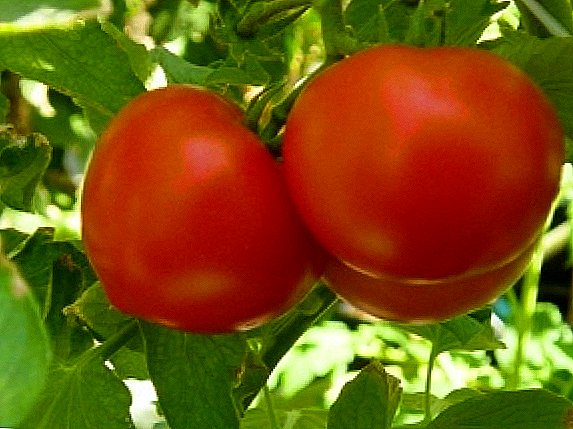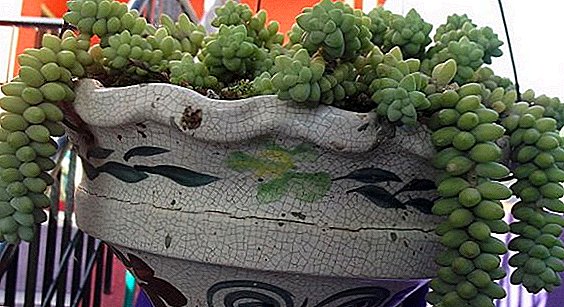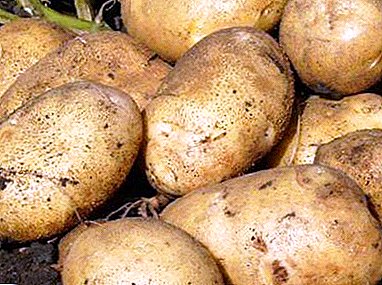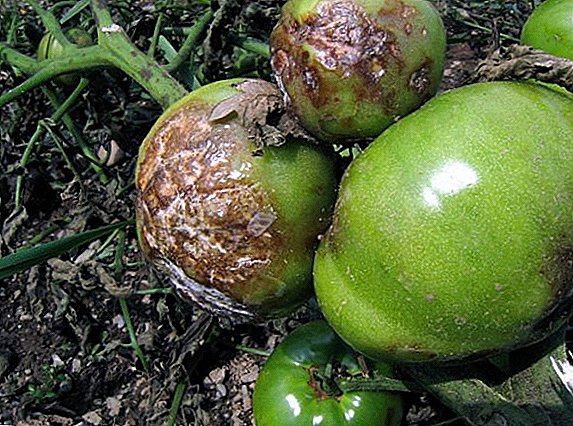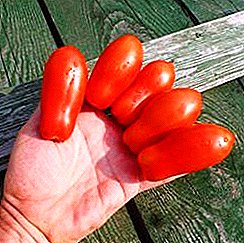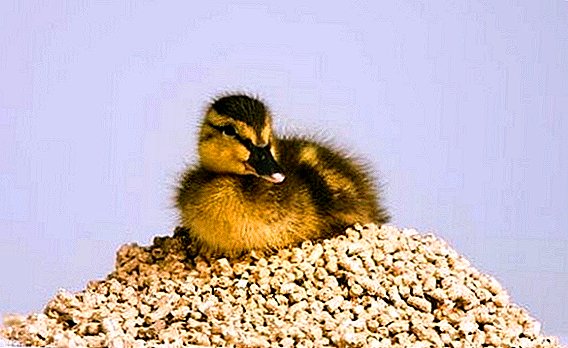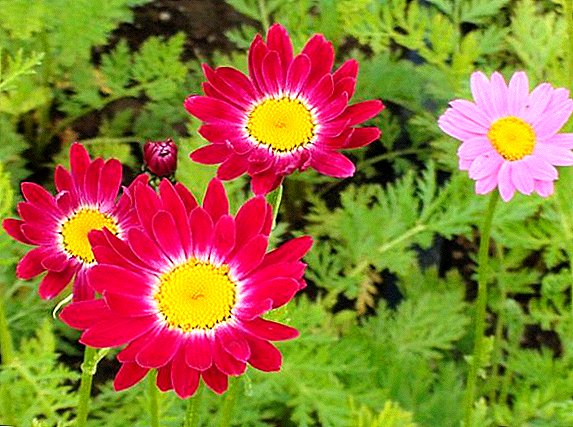 Pyrethrum is very widely used in garden design, as it is very similar to ordinary asters and daisies, but it has more attractive decorative properties. Below we study the plant pyrethrum and its types.
Pyrethrum is very widely used in garden design, as it is very similar to ordinary asters and daisies, but it has more attractive decorative properties. Below we study the plant pyrethrum and its types.
Pyrethrum: what is this plant?
The name of this beautiful flower is translated from the Greek as "fever", which immediately indicates one of the main properties of pyrethrum - ability to reduce heat. However, today it is more valued not for its healing properties, but for decorative ones, as it pleases the eye with attractive baskets gathered in lush inflorescences (in most varieties).
The main difference between pyrethrum and similar asters and chamomile - it is his ability to grow in the same place for many years. In this case, feverfew multiplies very easily - after flowering, about four hundred seeds are formed in each basket, which are used for planting. Seeds can be stored for about three years, while maintaining one hundred percent similarity.
Did you know? Pyrethrum is not only a means of traditional medicine, but also used to fight bedbugs and cockroaches. For this purpose, their distribution sites are simply sprinkled with powder prepared from dried pyrethrum. Pyrethrum also helps to fight pests when growing in a flower bed.
Popular types of pyrethrum
Pyrethrum varieties delight the eye with its diversity and brightness of the petals. Among them are flowers with a very unusual shape of baskets, which will become a real decoration for any flowerbed.
Pyrethrum Balsamic
Pyrethrum is balsamic, or tansy balsamic, - the most common type of feverfew in Ukraine, although its homeland is the Caucasus Mountains. 
It is a perennial plant that is capable of being stretched to a height of up to 1.5 meters. Due to this, during the flowering period, the flowerbed with balsamic pyrethrum looks like a white cloud of inflorescences-baskets, gathered in shields. Another feature of the variety is the ability of flowers to change their color from white to reddish-brown by the end of flowering.
It is recommended to sow pyrethrum balsamic seeds in sunny flower beds, although partial shade is also acceptable for them. Able to adapt well to both dry and rather wet soils, although it is important to keep the golden mean when growing. It is best to sow balsamic tansy, as this type of feverfew is also called, group plantings.
Feverfew
Feverfew is the most attractive view, owing to its unusual basket of flowers. This feverfew may have terry flowers, which are very similar in shape to chrysanthemums, but in addition to the fluffy core they may have another row of petals in the form of a collar. 
The color of maiden pyrethrum is predominantly white with a yellow core. In diameter, each flower can reach about 3 cm.
Each plant of this species is a dense bush, which is only about 50 cm in height. It is a perennial plant, although it is often used as an annual.
The most popular varieties of this species are:
- "Double White";
- "Schneeball";
- "Goldball".
Important! Do not sow together different types of feverfew, as they can pereopilyatsya. As a result, the flowers may lose their varietal quality.
Pyrethrum beautiful
A low plant that is drawn out and forms flowers at a height of 50 cm. Its stems and leaves are very similar to field daisies - just as bare, with only a rare pubescence. 
Baskets on them are formed solitary, only in rare cases 2-3 flowers may appear on a single plant. Reed flowers themselves, have white color of petals, the length of which reaches 2.5 cm.
But the seeds between the petals are greyish, which in general does not spoil the attractiveness of the species. The most attractive variety of this type of feverfew is the Caucasian Chamomile variety.
Pyrethrum
This is another feverfew, which was introduced from the Caucasus. It is a perennial, capable of growing up to 1.5 meters in height. White, very small flowers of this species are collected in fairly large plates, whose diameter may be about 10 cm. 
Like balsamic pyrethrum, when the basket of large-leaved pyrethrum wilt, they turn reddish-brown.
For this type, it is necessary to choose sunny beds, while the soil may be dry. It is recommended to sow with large plantings in the back of the flower bed. Varietal species has not.
Pyrethrum pink
Pyrethrum pink the appearance of their flower baskets is very reminiscent of ornamental daisies, which have pink petals. It is not surprising that another name for pink pyrethrum is Persian chamomile. On one plant is formed from one to five baskets. 
Pyrethrum pink is recommended to be planted in the center or behind the flower beds, since the height of plants of this species can reach 60 cm. If it is sown in large groups, then during the flowering period your flower bed will look very impressive and bright.
Among the varieties of this species, feverfew deserves special attention. "Dalmatian daisy", which has a bright red color of petals, and feverfew "Robinson" - also similar to chamomile variety, presented in red, white and pink shades.
You can also pay attention to these varieties:
- Atrosangvinea - it is distinguished by small baskets of flowers with red petals and long flowering from June to July (it blooms for about 14 days).
- "James Kelway" - The flowers of the variety are also red in color, bloom in June and begin to fade in early July.
- "Brenda" - distinguished by the most dense inflorescences of pink flowers.
- "Bressineham Red" - attractive bright crimson flowers.
- "Kelway's Glorious" - the only variety with scarlet petals and rather thick buds.
- "Vanessa" - a variety that differs terry buds with petals of various shades and a yellow heart.
- Pyrethrum hybrid - This is a variety mixture in which almost all varieties of pink pyrethrum are present.
Did you know? The great advantage of feverfew is that after flowering in May-June, it can start new flower stalks on its own in August.
Pyrethrum crib
This species is most similar to daisies, in connection with which it is also called chamomile. The name is also known. dorsal tansy. This is a perennial plant with a strong root system. 
Stems are single, can have different heights - from 40 to 120 cm. During flowering, a large number of attractive baskets are formed, which literally stick over the bush (up to twenty baskets can form on one plant).
All baskets are collected in loose thyroid inflorescences. Color is usually white. Pyrethrum flaky blooms around June. Varietal species does not have, however, it is found in the pyrethrum hybrid.
The use of pyrethrum in landscape design
Pyrethrum in growing unpretentious, which allows wide use of this flower in landscape design. It can be planted without problems in a bed with other flowers that, like pyrethrum, love the abundance of the sun. It is best to choose him in the neighborhood doronikum, philicean, churchyard, delphinium and bells.
Important! If feverfew on your flower bed has grown a lot and interferes with the growth of other flowers, it can be transplanted even during flowering. It is only important to preserve the soil on the roots of the plant, so that it is easier to stick to the new place.
Since most varieties of feverfew are perennial plants, growing it is also very practical. In particular, it can be used as a central or edging plant in carpet flower beds. In addition, most varieties of flowers can be trimmed to prevent flowering, so that your bed will be decorated with lots of greenery throughout the year.




